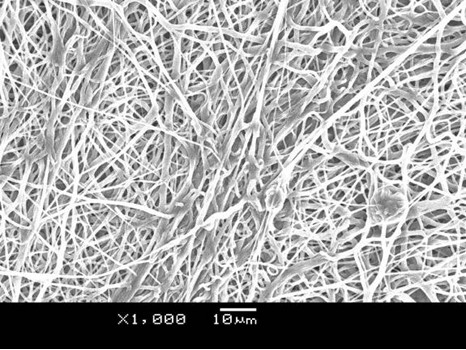Biodegradable extravascular stent and preparation method thereof
A technology for external stents and blood vessels, applied in medical science, surgery, etc., can solve the problems of promoting vascular intimal hyperplasia, and achieve the effects of uniform release, strength, and high drug loading
- Summary
- Abstract
- Description
- Claims
- Application Information
AI Technical Summary
Problems solved by technology
Method used
Image
Examples
Embodiment 1
[0027] Preparation method of degradable extravascular stent:
[0028] The first step: Synthesis of poly(ethylene carbonate) caprolactone copolymer: under the protection of argon, add comonomer ethylene carbonate (EC) and ε-caprolactone (CL) in toluene solvent for mixing, The molar concentration ratio of EC and CL is 1:6, the initial total concentration of EC and CL is 1.0mol / L, add catalyst tris(2,6-di-tert-butyl-4-methylphenoxy)lanthanum, catalyst three The initial concentration of (2,6-di-tert-butyl-4-methylphenoxy)lanthanum in toluene solvent was 1.0 × 10 -3 mol / L, copolymerization reaction at room temperature for 6 hours, adding ethanol solution of hydrogen chloride with a weight concentration of 5% as a terminator and precipitant, the volume ratio of ethanol solution of hydrogen chloride to the reaction system is 1:2, filter, and use the obtained precipitation Washed with ethanol and dried in vacuum to constant weight.
[0029] Step 2: Prepare the above polycaprolacton...
Embodiment 2
[0038] Preparation method of degradable extravascular stent:
[0039]The first step: Synthesis of poly(ethylene carbonate) caprolactone copolymer: under the protection of argon, add comonomer ethylene carbonate (EC) and ε-caprolactone (CL) in toluene solvent for mixing, The molar concentration ratio of EC and CL is 1:6, the initial total concentration of ethylene carbonate and ε-caprolactone is 1.0mol / L, and the catalyst tris(2,6-di-tert-butyl-4-methylbenzene oxy)lanthanum, the initial concentration of the catalyst was 1.0×10 -3 mol / L, copolymerization reaction at room temperature for 6 hours, adding ethanol solution of hydrogen chloride with a weight concentration of 5% as a terminator and precipitant, the volume ratio of ethanol solution of hydrogen chloride to the reaction system is 1:2, filter, and use the obtained precipitation Washed with ethanol and dried in vacuum to constant weight.
[0040] Step 2: Prepare the above polycaprolactone ethylene carbonate copolymer in...
Embodiment 3
[0049] Preparation method of degradable extravascular stent:
[0050] The first step: Synthesis of poly(ethylene carbonate) caprolactone copolymer: under the protection of argon, add comonomer ethylene carbonate (EC) and ε-caprolactone (CL) in toluene solvent for mixing, The molar concentration ratio of EC and CL is 1:6, the initial total concentration of ethylene carbonate and ε-caprolactone is 1.0mol / L, and the catalyst tris(2,6-di-tert-butyl-4-methylbenzene oxy)lanthanum, the initial concentration of the catalyst was 1.0×10 -3 mol / L, copolymerization reaction at room temperature for 6 hours, adding ethanol solution of hydrogen chloride with a weight concentration of 5% as a terminator and precipitant, the volume ratio of ethanol solution of hydrogen chloride to the reaction system is 1:2, filter, and use the obtained precipitation Washed with ethanol and dried in vacuum to constant weight.
[0051] Step 2: Prepare the above polycaprolactone ethylene carbonate copolymer i...
PUM
| Property | Measurement | Unit |
|---|---|---|
| concentration | aaaaa | aaaaa |
| concentration | aaaaa | aaaaa |
Abstract
Description
Claims
Application Information
 Login to View More
Login to View More - R&D
- Intellectual Property
- Life Sciences
- Materials
- Tech Scout
- Unparalleled Data Quality
- Higher Quality Content
- 60% Fewer Hallucinations
Browse by: Latest US Patents, China's latest patents, Technical Efficacy Thesaurus, Application Domain, Technology Topic, Popular Technical Reports.
© 2025 PatSnap. All rights reserved.Legal|Privacy policy|Modern Slavery Act Transparency Statement|Sitemap|About US| Contact US: help@patsnap.com



